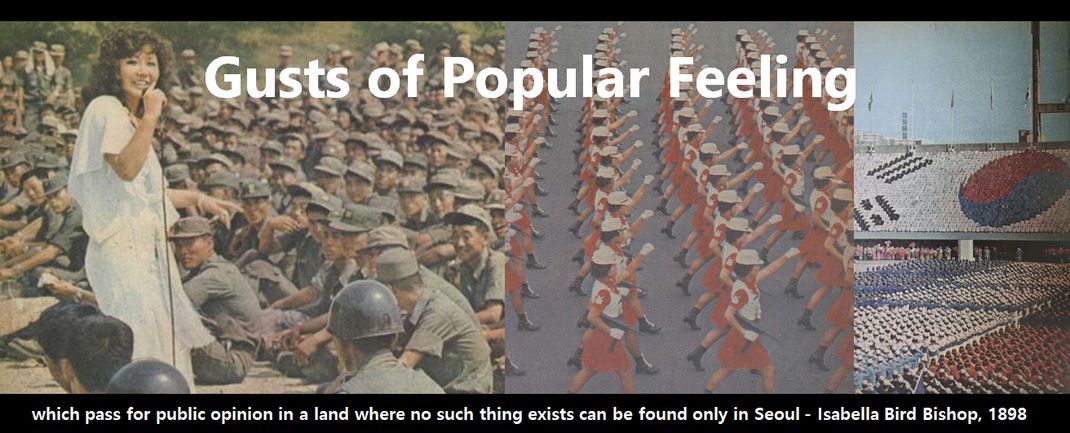The Seoul metropolitan government Friday designated six "Global Villages'' to provide various tailor-made services to foreigners living in the capital. The villages are "Americatowns" in Itaewon-dong, Hannam-dong and Yeoksam-dong; a Chinatown in Yeonnam-dong [north of Hongdae station]; a "Francetown" in Seocho-dong; and "Japantown" in Ichon-dong.In a November 13 Korea Times op-ed titled "Korea Eager to Embrace Foreigners," Choo Kyu Ho, Commissioner of the Korea Immigration Service, seemed to suggest that the city's newest plan was the last thing Immigration wanted:
The Seoul government also announced four locations in which foreign-invested companies are mostly located as "Global Business Zones," namely Gwanghwamun (in central Seoul); Yeouido, Samseong-dong; and Yeoksam-dong.
The Seoul government also named five places ― Myeong-dong, Namdaemun, Dongdaemun, Insa-dong, Itaewon ― as "Global Culture Sharing Zones.''
These are part of the local government's efforts to transform Seoul into a "foreign-friendly'' city.
Low-income immigrant workers are beginning to congregate in cheap neighborhoods, raising the prospect of ghettoes.Of course, he was describing "low-income immigrant workers," who most certainly do not fit into any of the new 'villages' mentioned above.

An example of such workers can be found in this December 13 Joongang Ilbo article about Chinese Koreans living in Garibong-dong:
Garibong 1-dong is one of those rare areas in Seoul where you can find many second-hand stores selling everything from clothes to electronic goods. There’s also a strong sense of community since many settlers have set up restaurants and stores full of imported Chinese goods. This makes it a congenial district for new migrant workers from China to find their feet.One of the reasons this town has not been designated a "global village" is because, as I've mentioned before, there are other plans afoot for the area:
But more importantly, especially for a city as expensive as Seoul, the biggest attraction is the cheap rent. Most accommodation consists of a single room and kitchen. During the massive industrialization of the 60s and 70s, the rooms were built for workers who flocked to Seoul for work in the huge factory compounds nearby. Those compounds have now been transformed into high-tech industrial complexes and neighboring fashion outlets.
Out of 30,000 ethnic Koreans from China living in Korea, 7,000 are currently settled in this neighborhood, an area that is also known as “a beehive town.” Most accommodation consists of a single room the size of a prison cell, originally built for migrant factory workers. The rents are among the cheapest in Seoul.
It was shortly before the Seoul Olympics in 1988 that ethnic Koreans from China began to settle in this neighborhood, according to the Guro District Office. They were mostly peddlers who went back and forth between Korea and China, selling clothes and miscellaneous goods. The number dramatically rose in 1992 when Korea and China opened diplomatic ties. As of September 2007, the Ministry of Law said there were 288,000 migrants from China in Korea. One out of three foreign citizens in Korea is an ethnic Korean from China, the ministry reported.
Some Koreans in the construction industry say they should get paid more than ethnic Koreans, a claim that has outraged the migrants. “Many Koreans treat us like foreigners.”
While the immigration commissioner was worried about such a settlement "raising the prospect of ghettoes", the obvious solution is to simply bulldoze the area to the ground - a fate that does not seem to await the settlements of foreigners from western countries, which are instead rezoned as "Global Villages." My question is this: when the residents of Garibong are working on the construction crews destroying their old homes, will they be paid less than Koreans born within the ROK's borders?Joseonjok Town in Garibong-dong, Guro District, western Seoul is scheduled to be destroyed in 2009 as part of a city redevelopment project. Under the plan, the Garibong area will be transformed into business and residential centers to support 859 information technology start-up firms operating in the district.
“The area is designed to provide convenience to information technology businesses in the district. There will be hotels, convention centers and shopping malls, as well as a residential area,” said Jeong Woo-seok, an official at the Korea National Housing Corporation in charge of the redevelopment project.


2 comments:
I live in Seattle where gentrification of many low-income, people of color neighborhoods are being destroyed to accommodate the new rich yuppies who are attracted to the city life. It seems like something similar is happening in Seoul. I have read that the migrant workers unions are real active in Seoul. Do you know much about that? I wonder whether something like the destruction of their homes would get them moving too.
JOMO
In my experience with the migrant workers' union, there were very few Chinese or Korean-Chinese people involved with them - they tended to be from southeast or south Asia. Massive projects like this occur all the time in Seoul (much more than in American or Canadian cities) and the area may well have been on the chopping block for some time. The government does have a policy of trying to prevent enclaves of North Korean refugees from forming, so it's not inconceivable that this is the case here. At any rate, the lack of any mention of this area being made while many other areas are designated as 'ethnic zones' would seem odd if you didn't realize it was being levelled soon.
Post a Comment